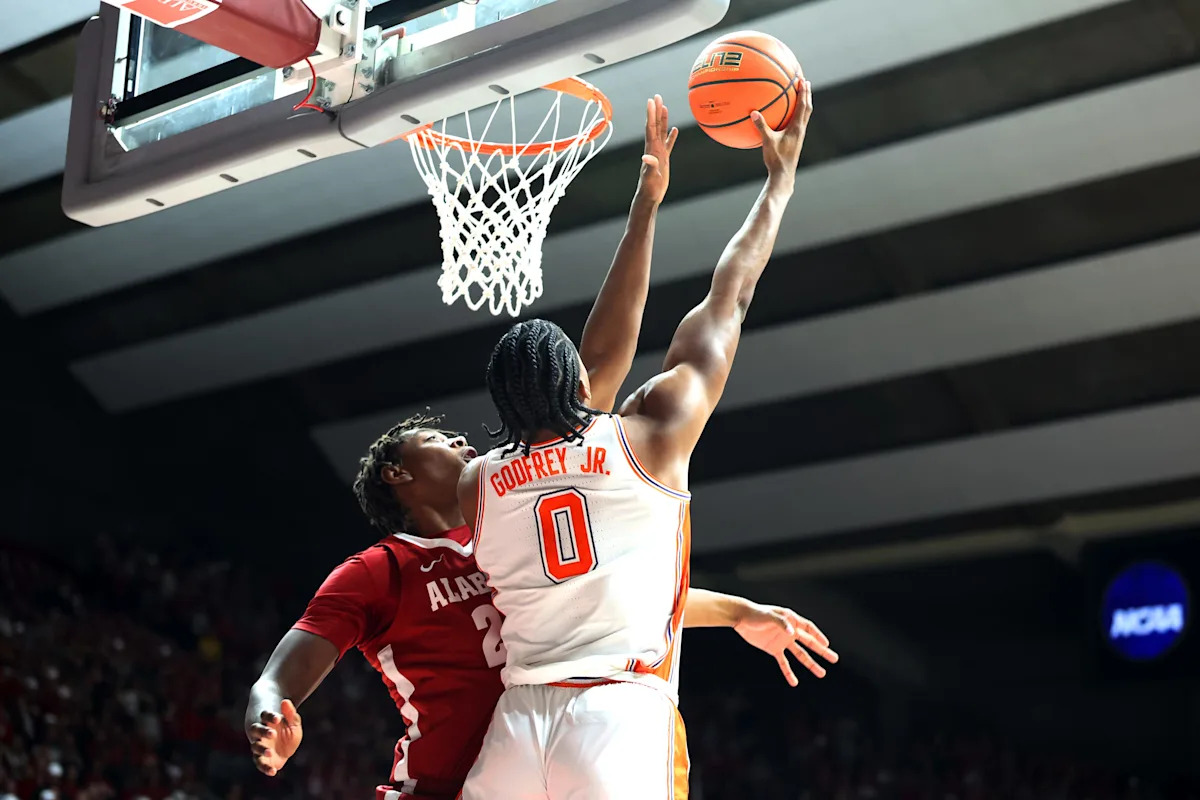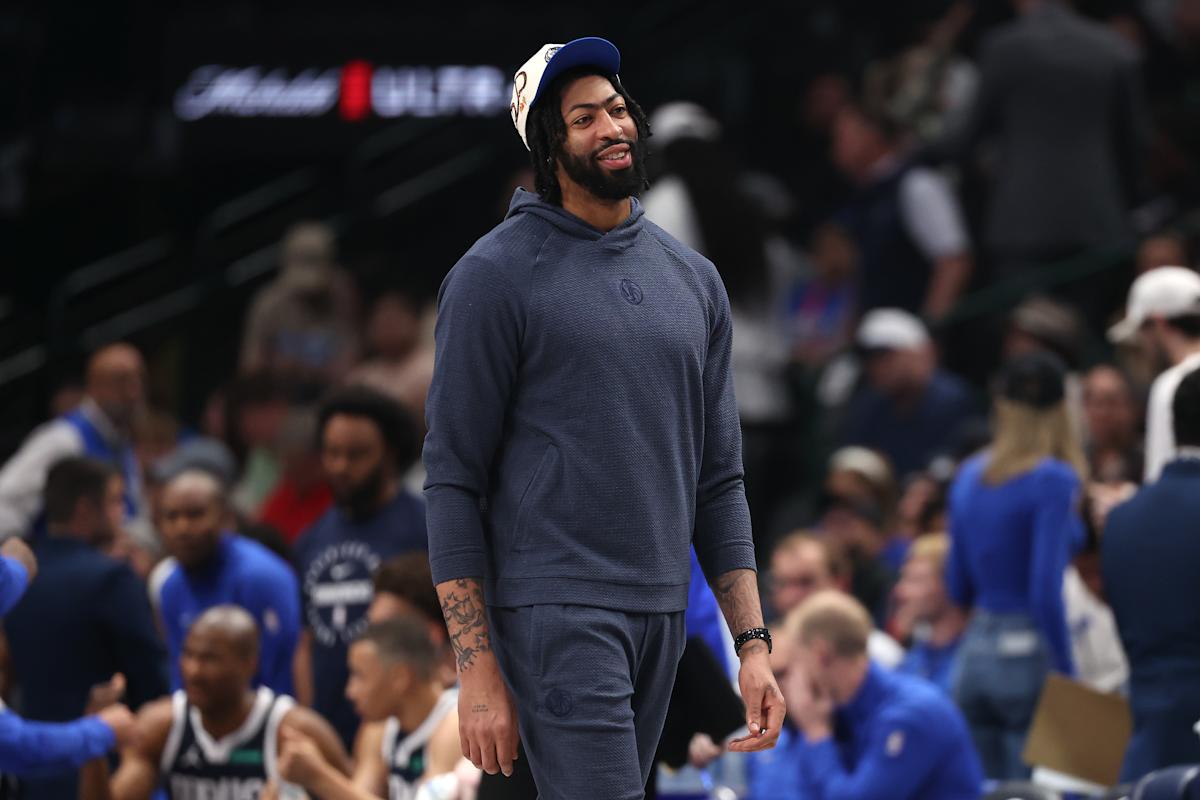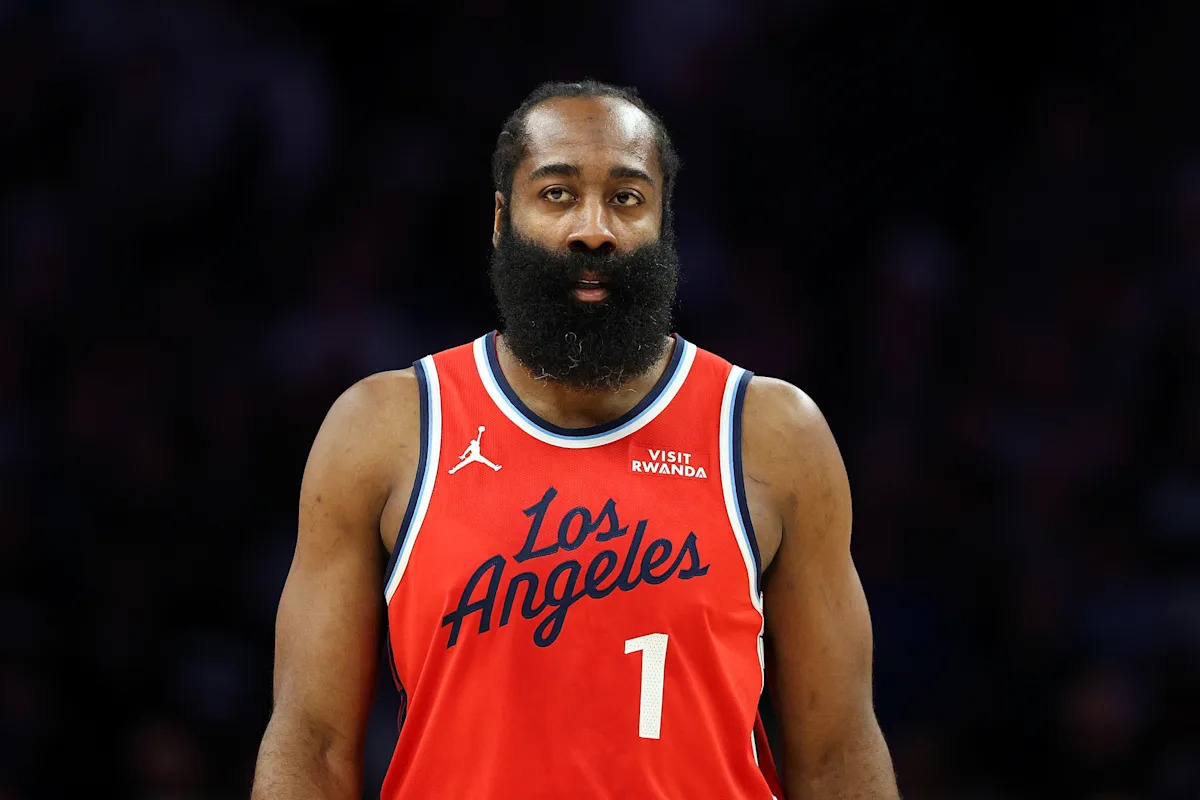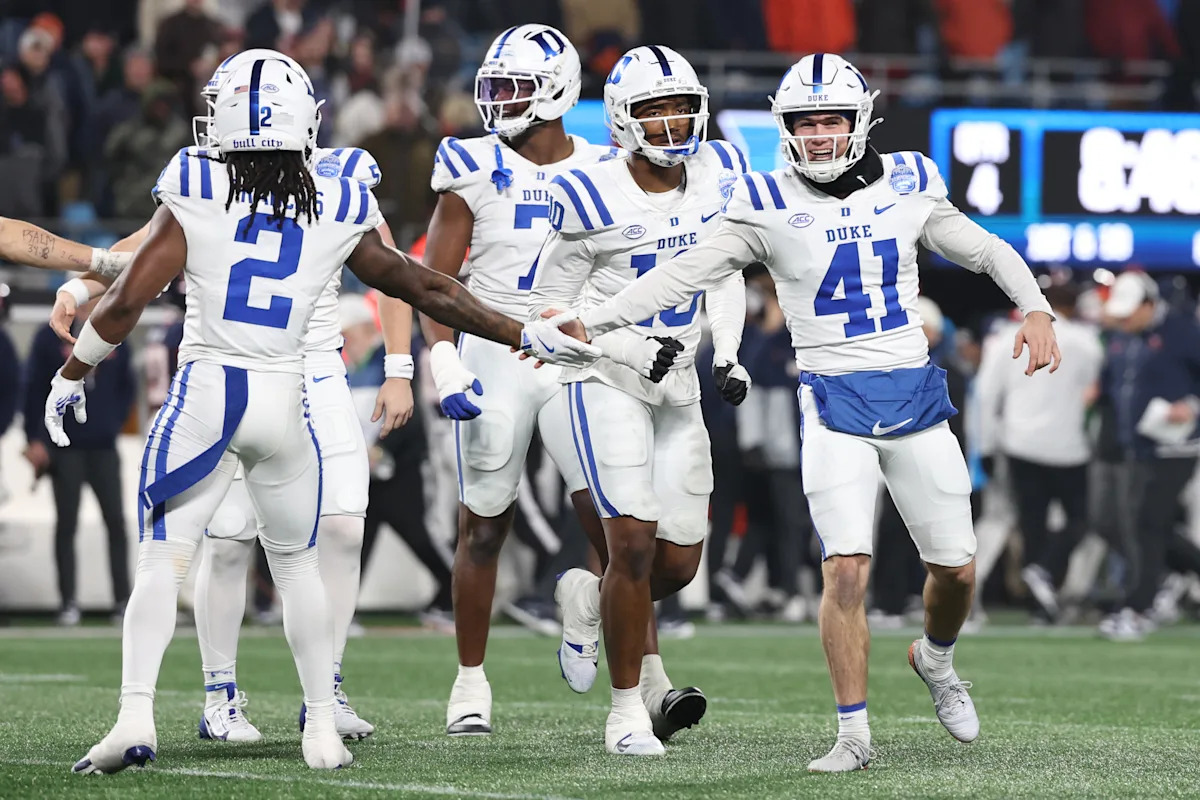WACO, Texas — Last December, Baylor general manager Jason Smith met with coach Scott Drew and told him the program needed to adjust its thinking on recruiting.
“It doesn’t matter if they’re 18 or 25, if they are from Kansas or China,” Smith told him. “Everybody on the planet is a free agent now.”
This is a reality of college basketball in 2025. This story is about Baylor, but it could be about any number of high-major teams. According to statistics from the NCAA, more than 1,500 Division-I players entered the transfer portal after 2023-24. The number for this offseason isn’t yet available, but it likely increased.
Four years after winning the national title and fresh off a second-round NCAA Tournament appearance, Baylor had nine players enter the portal. It did not return one player who saw the floor last season.
Nobody’s exempt from it, Drew says, pointing out Auburn returned just one player from its rotation and lost a starter to the portal after making the Final Four.
“Things can change really, really quickly nowadays,” Drew said.
How does one build a roster, essentially, from scratch? This required a change in mindset for Drew in his 23rd season with the Bears. Baylor had been operating under the premise of “Who could be available?” Knowing Baylor was about to face a major overhaul, Smith wanted to narrow the target pool.
For every position, Smith laid out the ideal player for the Bears. Smith built models for each position, emphasizing the advanced stats that matter for that player type, and then plugged different options into his algorithm to see how they scored.
Instead of chasing 75 players at each position once the portal opened, the hope was to narrow that list to 10 players Smith had already been studying.
It’s similar to how NBA teams approach free agency and the draft, and not coincidentally, Drew sent Smith on a methodology chase two years ago when he promoted him from director of recruiting to general manager, a position that 29 high-major programs now employ. Smith spent time with the Golden State Warriors, Memphis Grizzlies, San Antonio Spurs and Chicago Bulls. He studied the budgets of every NBA team and the percentage of each team’s salary pool that went to each player. The best player, on average, receives around 20 percent, and 50-60 percent of the budget goes to the top three players.
In his first two portal cycles, Smith followed some of the roster-building tactics he’d studied but didn’t stay true to all of them. After Baylor lost in the Round of 32 for the fourth straight season last year, he was convinced he needed to follow through with his plan and start by targeting the players who fit his algorithm.
The December sitdown with Drew turned out to be important. While Smith knew Baylor would have to replace three players who would run out of eligibility, along with V.J. Edgecombe, Baylor’s surefire one-and-done lottery pick, he didn’t realize every scholarship player with eligibility, outside of midseason transfer Cam Carr, would enter the portal.
Including the one player Baylor planned to construct its roster around.
Drew and Smith have been course correcting for several years. In 2022-23, Baylor went from three straight seasons with a top-25 defense to finishing 107th in adjusted defense— one reason why: The Bears were undersized at guard.
In 2023-24, Baylor started a taller perimeter and the defense slightly improved (72nd), but the coaching staff believed a lack of NCAA Tournament experience contributed to the second-round exit.
So in the spring of 2024, Baylor worried less about a player type and more about tourney experience. Its highest-paid acquisitions out of the portal were Norchad Omier and Jeremy Roach, who had both played in a Final Four. Jalen Celestine had yet to play in an NCAA Tournament, but brought four years of experience at the high-major level, giving Baylor six upperclassmen in the rotation who had all played at the high-major level the previous year, to go with two highly rated freshmen.
“We may have swung too far toward nothing else matters other than experience and Final Fours,” Smith said. “The pieces just didn’t fit. We were less concerned with fit and more concerned with we’ve got to check this one box.”
This spring was a chance to hit reset, much like Baylor had done in 2018 when the program last missed the NCAA Tournament. That offseason Drew brought in eight new players, including two sit-out transfers. They were the core who reestablished Baylor’s culture and convinced Drew to ditch his zone defense. There were no five-stars among the group. They all seemed to have something they wanted to prove.
After the sit-out year for Davion Mitchell and MaCio Teague, that core went 54-6 the next two seasons and won the 2021 national title. Four of the starters on the title team were among those eight newcomers in 2018.
Jared Butler and Davion Mitchell were two crucial pieces to Baylor’s 2020-2021 championship season. (Jamie Squire / Getty Images)
“We needed to kind of get back to our roots and grind guys that want to work hard,” Smith said. “All of those guys (on the title team) were overlooked and came in either unheralded or as transfers.”
The other factor for Smith and Drew to consider was their budget. A year ago, Baylor’s biggest donors were incentivized to hold onto Drew, who was being pursued by Kentucky. The 2024-25 Bears were believed to have one of the most expensive rosters in college basketball. (Drew will not discuss numbers, but he does not reject the premise.)
This year, Baylor was facing a different financial outlook.
“We’re all at Baylor with the expectation of national championships,” Smith said. “If we have a smaller war chest than other programs, it still doesn’t change our goal at the end of the day. We know our hurdles financially.”
This meant that Drew and Smith knew they had to be realistic when it came to retention. Baylor had four rotation players who could return: freshman starter Rob Wright, Celestine (who had a sixth year of eligibility because an injury held him out in 2022-23), junior center Josh Ojianwuna and junior Langston Love. Through conversations with their agents, Baylor learned that the latter three were going to be able to secure offers that exceeded what Baylor had slotted for them.
Celestine signed with Cincinnati, Ojianwuna with Ohio State and Love with Georgetown. That left Wright, who had thrived in Baylor’s system as a freshman, averaging 11.5 points and 4.2 assists. He was clearly the priority, and Baylor was able to get Wright to sign a contract to return for his sophomore season. With his return imminent, Smith set out to find players who fit alongside him.
By Final Four weekend, Baylor had signed three probable starters: incoming freshman Tounde Yessoufou and transfers Obi Agbim and Michael Rataj. That meant the only starting spot left to fill was the center spot.
On Sunday morning, while at the Final Four in San Antonio, Smith got a call at 7:02 a.m. and didn’t answer. He rolled over and saw it was from a compliance staffer at Baylor. Two minutes later, Wright’s agent called.
“I’m like, oh God, that’s only one thing,” Smith said.
Wright was going in the portal, and Baylor was told there was no way to get him to reverse course. He soon signed with BYU.
“We never even got a chance to talk to him, his family, anything,” Smith said. “It was just done.”
Smith immediately packed his suitcase and drove back to Waco, calling agents during his three-hour drive. By the time he arrived, he had four point guards to present to the staff. The coaches met at 1 p.m. and conducted video calls with three of the point guards that day, staying in the office until 10 p.m.
They didn’t sign any of them.
“They were the best available,” Smith said. “But do we need to overspend or make a panic move right now? We didn’t want to do that. They were the last three on the market, and they were commanding giant numbers.”
The Bears needed to stick to the algorithm.
One reason to have a general manager in today’s game is that coaches are focused on their own team during the season, and they need someone watching everyone else.
“It’s like if you’re writing a book and somebody’s getting all the research for you, and then now you get to decide what’s in the book,” Drew said. “So with Jason, he laid out the pieces, and it’s like, how do we put this puzzle back together?”
Every time Smith gets a call about a player, he writes down the name, who gave him the lead and then pops the player in his spreadsheet to see what he scores in his model, which has different parameters for each position.
At center, for instance, Baylor has won with athletic, rim-protecting, rim-rolling lob catchers in the form of Yves Missi or Jonathan Tchamwa Tchatchoua. Drew has always been hesitant to pigeonhole himself into a player type. What if, for instance, he could get a Zach Edey or Nikola Jokic?
Then they’d rebuild the offense around him, Smith tells him. But the more realistic scenario was to search for the prototype they’d won with before.
“Now I’m watching High Point basketball every day,” Smith said, “and (Juslin Bodo) Bodo fits exactly what we’re looking for.”
Bodo Bodo, a 7-footer, had a low usage rate but was super efficient, had the best offensive rebounding rate in the country, ninth-best defensive rebounding rate and was 82nd in block rate. (He’s currently rehabbing a shoulder injury, but once healthy, he’s the projected starting center.)
At shooting guard, Baylor has had success with mid-major guards who shot high 3-point percentages at their previous stop like Teague and Adam Flagler. Agbim, who shot 43.7 percent from 3 in one season at Wyoming, was one who Smith identified early in the season and then fell in love with the tape. He was at the top of Smith’s list and the first call he made this cycle.
“I thought he was electric,” Smith said. “I thought he was an elite, elite scorer.”
Smith called a coach on every Mountain West staff to see if they thought Agbim could play in the Big 12, then called coaches who had faced him in junior college. By the time Ogbim had committed, Smith estimates he’d contacted 30 people about him.

Obi Agbim, who averaged 17 points per game at Wyoming, was one of the players Baylor heavily targeted this offseason. (Isaiah J. Downing / Imagn Images)
“We’ve even started going down the NBA route of you’re going to intel back to freshman, sophomore in high school,” Smith said. “You’re asking old coaches, you’re trying to look up old girlfriends. We’re digging their Twitter and Instagram posts. He checked a lot of those boxes too for the culture and the locker room guy.”
Baylor benefitted from word of mouth when it came to Rataj, who played for the same team (Ulm, in Germany) as former Baylor one-and-done forward Jeremy Sochan. Because of Sochan, Rataj had followed Baylor’s program.
“I was pretty well confident that I wanted to come here because of the resume they have over the last couple of years,” he said.
Rataj was conveniently near the top of the list of four players in Smith’s model. At 6-9, he could handle the ball, facilitate and was a capable 3-point shooter. It was important to land that position early because Smith sees it as a swing spot. If that player can shoot, then you can sacrifice some shooting on the wing.
That convinced Smith and Drew to stick to their mission of getting bigger and longer on the perimeter. The next big target was a big wing, and they found one with Big 12 experience in Dan Skillings Jr., who at 6-6 had one of the highest block/steal rate combos — known as the Hakeem percentage — in the Big 12 while at Cincinnati.
Adding size and length in this roster reset was an intentional effort to improve on defense. Drew was also on a mission this offseason to find a coach who could help him defensively. He found a free agent there too, adding Ron Sanchez, who was Virginia’s interim head coach last season and has a ton of experience running the pack-line defense as a longtime assistant under Tony Bennett.
“I know from playing against him, nobody liked going against that defense,” Drew said.
Experience is also important when it comes to winning, and Smith reminds the staff of that with another spreadsheet he has put together. It includes the 40 Elite Eight teams from the last five seasons, listing out the class of each player who played at least 10 minutes per game.
Only three of those teams played more than two freshmen — Arkansas (2020-21) and Duke (2021-22 and 2024-25) — and only 1.7 percent of rotational players were freshmen. Also “stunning” to Smith was those teams included only six players who originally ranked in the top 10 of their recruiting class.
“Everybody in the country already says it, but get old, stay old,” Smith said. “Then, like coach (Drew) says, some freshmen you look at and they’re the mystery lottery scratch off, where if the perfect player is a 10 out of 10, this kid coming in day one might be a six, but because you’re a freshman, by the end of the year he might be at nine. And a mid-major guy might be an eight, but he might stay an eight all season. Like, did he already maximize his ability?”
That’s why Baylor has continued to invest in at least one one-and-done level lottery pick in recent years. In the last four years, Baylor has had six freshmen get drafted. Yessoufou is projected to be a lottery pick in 2026.
Just as important as finding those star-level players is identifying developmental players who can eventually be key role players. Not only do you have to find those players, you have to retain them. Baylor’s back half of the roster is filled with guys who knew what they were signing up for. They were all pitched to Baylor as development projects.
“That’s where we learned from the previous years is you’ve got to have a database of not only by position, but also what role they want,” Smith said. “Because once you’re looking for your ninth man, you don’t want to waste your time calling starting caliber guys.”
Drew has a slogan for his program. He wants to go 1-0 every day, every drill, every game. It’s rare to see him without a smile on his face.
“Glass is half full with me,” he said.
Some might see him as cheesy, but he’s going to put a positive spin on Baylor rebuild. “It’s a great opportunity to prepare champions for life with more people,” he said. But he also admitted it was difficult to face the reality that everyone left.
“Every time a player leaves before they graduate and before they finish up here, that’s hard on me,” Drew said. “And I know it’s hard on other coaches and the reason is you feel like the job’s not done.”
Drew took some Ls this past spring, but when it came time to recruit the new players, Baylor basically went undefeated. Smith said every player who visited last spring signed. When Rataj arrived for his visit, the coaching staff met him outside, jumping around like they were about to celebrate a championship.
“You go on visits and people try to sell you everything: money, you can have this, nice apartments and stuff,” Rataj said. “But they were more about basketball and who I am as a person.”
Skillings didn’t want to stay in the Big 12. He was also considering LSU, USC, Oklahoma, Creighton, Gonzaga and St. Joe’s. But after the Baylor visit, he was struck by the possibility that if he didn’t go to Baylor, he may never see Drew again. He was scheduled to visit LSU next, but he canceled that visit and signed with Baylor.
“Talking to him felt like I was already on his team,” Skillings said. “It’s kind of hard to explain, but he wasn’t just trying to sell me to come to Baylor. How much he was digging in to get to know me, and speaking about deep things with me, it touched my heart. I knew this was the place.”
The challenge when you have an entirely new roster is building chemistry on the fly, but Baylor was given a gift when this offseason lined up with a pre-planned foreign trip. The Bears competed this summer in the World University Games, where they won a silver medal.
“Foreign tours really help you to build chemistry faster,” Drew said. “That quality time together speeds up the process. It’s like going on a weekend away with your wife and no cell phone for two days; that’s worth 10 date nights in public.”
The international players could not play because Baylor was representing the United States. So that meant no Yessoufou, Bodo Bodo or Rataj, who will likely all be starters.Rataj was in the same tournament, however, playing for Germany, and got to hang out with his new teammates.
“We’ve been together already for like two, two-and-a-half months,” Rataj said. “All those guys are already like my best friends.”
It’s late September during this visit, and most players like their teammates in September and most coaches are optimistic about their teams. How this goes will be determined in March.
Drew hopes that hitting reset means his team will go beyond the first weekend in the 2026 NCAA Tournament. And one reason why?
“I think the biggest punishment for losing your last game is what you got to do for the next several weeks,” he said. “It’s like finals week for a month.”
Smith is already preparing for the next cycle. On one September day, he said he left practice to six missed calls from agents.
But if all goes according to plan, Baylor will only need four, maybe five players. The Bears graduate five, could lose Yessoufou to the NBA and already have one 2026 recruit committed. They don’t want to start from zero again.
“Even if we have to get five,” Smith said, “that feels like a vacation. Last year was hopefully a one-time thing that we will never have to go through again.”
























